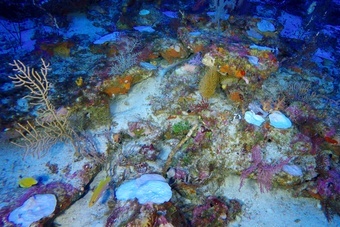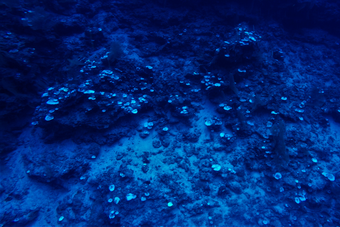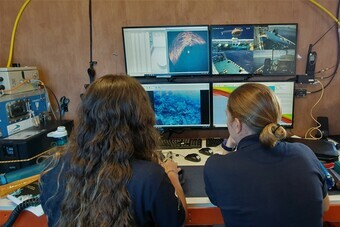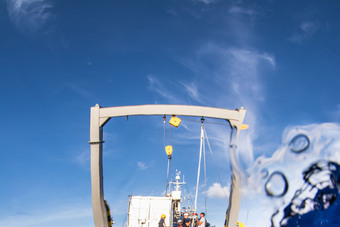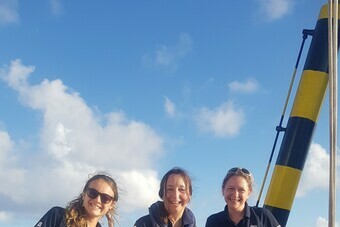Publications:
Diaz et al. 2023
As global temperatures continue to rise, shallow coral reef bleaching has become more intense and widespread. Mesophotic coral ecosystems reside in deeper (30–150 m), cooler water and were thought to offer a refuge to shallow-water reefs. Studies now show that mesophotic coral ecosystems instead have limited connectivity with shallow corals but host diverse endemic communities. Given their extensive distribution and high biodiversity, understanding their susceptibility to warming oceans is imperative. In this multidisciplinary study of an atoll in the Chagos Archipelago in the central Indian Ocean, we show evidence of coral bleaching at 90 m, despite the absence of shallow-water bleaching. We also show that the bleaching was associated with sustained thermocline deepening driven by the Indian Ocean Dipole, which might be further enhanced by internal waves whose influence varied at a sub-atoll scale. Our results demonstrate the potential vulnerability of mesophotic coral ecosystems to thermal stress and highlight the need for oceanographic knowledge to predict bleaching susceptibility and heterogeneity.
15- 160 m
Mesophotic “mentions”
46 x (total of 6601 words)
Classification
* Presents original data
* Focused on 'mesophotic' depth range
* Focused on 'mesophotic coral ecosystem'
Fields
Climate Change
Disturbances
Oceanography
Focusgroups
Scleractinia (Hard Corals)
Locations
Chagos Archipelago
Platforms
In-situ instrumentation
Remotely Operated Vehicle (ROV)


